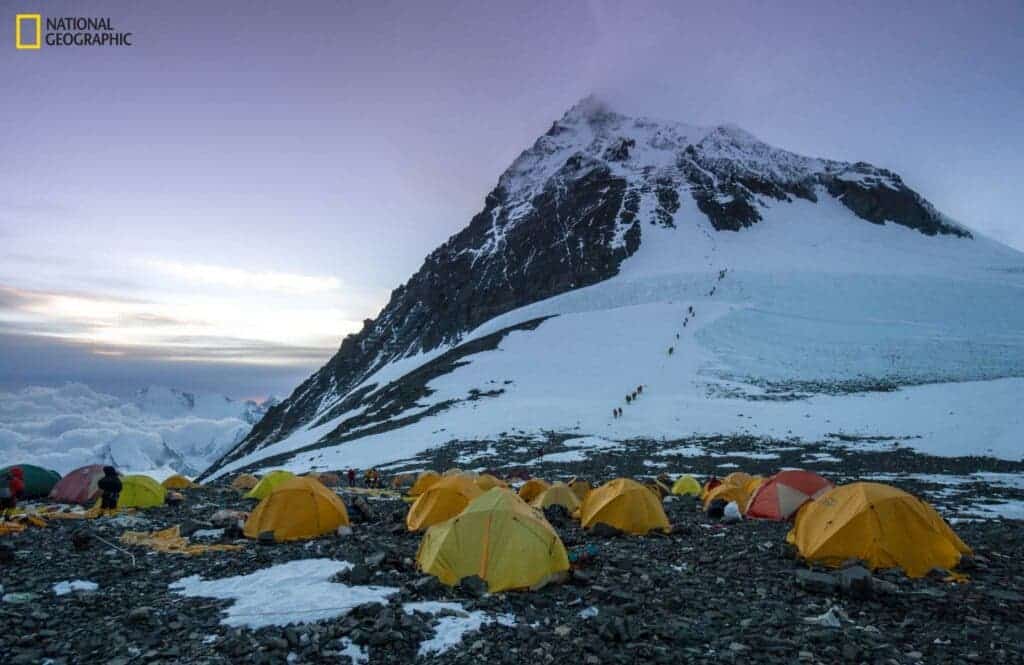
Microplastics are often associated with ocean pollution, but a new study shows that the tiny plastic fragments are literally everywhere, from sea level to just below the summit of the highest mountain on Earth.
Researchers affiliated with the National Geographic and Rolex Perpetual Planet Everest Expedition analyzed snow and stream samples from Mount Everest, finding the first evidence of microplastic pollution on a mountain.
“I didn’t know what to expect in terms of results, but it really surprised me to find microplastics in every single snow sample I analyzed. Mount Everest is somewhere I have always considered remote and pristine. To know we are polluting near the top of the tallest mountain is a real eye-opener,” Imogen Napper, a National Geographic Explorer and scientist based at the University of Plymouth, said in a press release.
Napper, known to her colleagues as the “plastic detective” for her persistent efforts with which she trails plastic pollution, also said Mt. Everest can be described as “the world’s highest junkyard.”
Expedition members collected samples from Mt. Everest in 2019, which they shipped to Napper’s lab at the University of Plymouth. Her research revealed significant quantities of polyester, acrylic, nylon, and polypropylene fibers. It’s no coincidence that the same materials are embedded in the outdoor clothing climbers use, as well as tents and climbing ropes.
The highest concentration of microplastics was found around Base Camp, an area at the foot of Mt. Everest where trekkers and hikers spend most of their time on their quest to climb the summit. However, microplastics were found all the way up at 8,440 meters (27,560 feet) above sea level, which is just below the summit.
That’s not all that surprising to see. While Mt. Everest was a major challenge to trek, alpine tourism has made the journey much more accessible. Since Edmund Hillary and Tenzing Norgay first reached the highest peak in the world 60 years ago, thousands of climbers have reached the same heights. Every year, hundreds more are added to the list.
Nepalese authorities say that the number of visitors to Sagarmatha National Park, where Everest lies, has roughly tripled in the past 20 years. This increasing number of tourists inevitably comes with a growing amount of rubbish left behind on the mountains.
Now that microplastics have been confirmed on Mt. Everest, the researchers are busy figuring out what’s the best way to clean up this troublesome kind of pollution.
“Currently, environmental efforts tend to focus on reducing, reusing, and recycling larger items of waste. This is important, but we also need to start focusing on deeper technological solutions that focus on microplastics, like changing fabric design and incorporating natural fibers instead of plastic when possible,” Napper says.
“These are the highest microplastics discovered so far,” she added “While it sounds exciting, it means that microplastics have been discovered from the depths of the ocean all the way to the highest mountain on Earth. With microplastics so ubiquitous in our environment, it’s time to focus on informing appropriate environmental solutions. We need to protect and care for our planet.”
The findings appeared in the journal One Earth.


